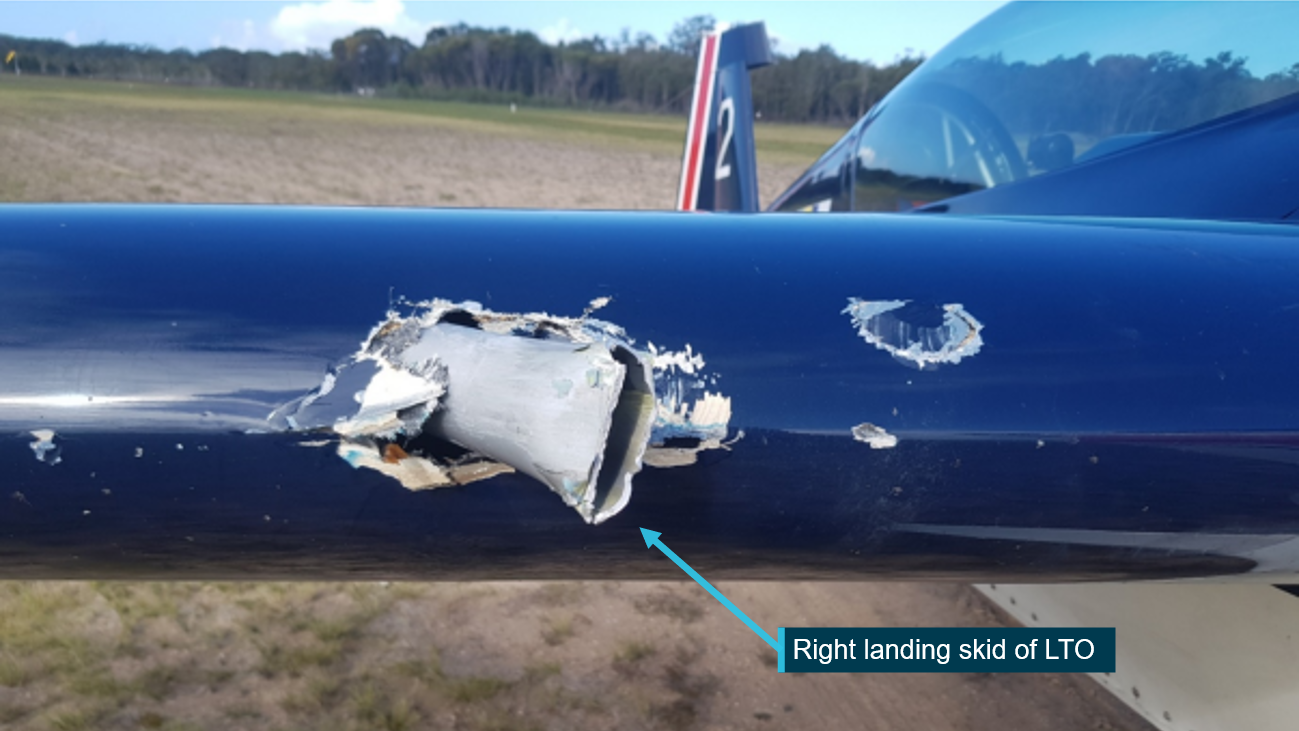
A high-performance aerobatic aircraft’s collision with a helicopter on the runway at Caloundra, Queensland highlights the importance of pilots being aware of the circuit procedures for differing kinds of aircraft, an Australian Transport Safety Bureau investigation report notes.
On 18 September 2020, a two-seat Extra EA-300 aircraft with two experienced pilots onboard was conducting circuits at 1,000 ft (above airport elevation) at Caloundra Airport, a non-towered airport where aircraft self-separate from each other using radio calls on the Common Traffic Advisory Frequency (CTAF). The pilot-in-command occupied the Extra’s front seat, and was conducting a check flight of the rear-seat pilot.
A two-seat Guimbal Cabri G2 helicopter, with a solo student pilot on board conducting a navigation exercise flight from Redcliffe, joined the circuit ahead of the Extra and was conducting a stop-and-go on the active runway.
The Extra landed on the runway behind it, and during the landing roll collided with the rear of the hovering helicopter, resulting in substantial damage to both aircraft. The helicopter sustained multiple propeller strikes underneath the cabin and separation of its right landing skid. The Extra’s wooden propeller was destroyed by the impact with the helicopter’s fuselage and landing skid, which punctured the Extra’s right wing fuel tank. Fortunately there were no injuries.
“The ATSB found the pilots of the Extra did not expect the helicopter to join the 1,000 ft circuit pattern, and did not assimilate the helicopter pilot’s radio calls into their mental models of the current operations at the airport. As a result, they were not aware that the helicopter was ahead of them in the circuit,” said ATSB Director Transport Safety Stuart Macleod.
The ATSB also identified that, on the final leg of the circuit, the pilots of the Extra were focused on a third aircraft in the circuit, which was ahead of the helicopter, and which they had been in radio communications with.
“While the pilots visually scanned the runway prior to landing, they were not aware of the helicopter’s presence, and they perceived a different aircraft to be the next ahead of them in the circuit, which resulted in them not sighting the helicopter and continuing the approach to the runway,” Mr Macleod said.
Further, the tail-dragger Extra’s nose-high attitude during landing obscured the hovering helicopter until immediately before the collision.
During interviews with the ATSB, the rear-seat pilot reported an expectation that helicopters would generally remain clear of circuit traffic, and that they have never known helicopters to hover over runways, while the front-seat pilot noted that helicopters regularly approach Caloundra but most remain clear of the circuit.
Mr Macleod said the accident highlights the importance for pilots of having an awareness of the circuit procedures for different types of aircraft at non-towered airports, including helicopters.
“A helicopter performing a stop-and-go will usually require significantly more time to clear the runway, compared to an aeroplane performing a touch-and-go,” he said.
“Around CTAF and uncontrolled airports there is the possibility of aeroplanes and helicopters conducting movements that might not be considered commonplace. This investigation highlights that multiple options are available to helicopters at non-towered airports, including the active 1,000 ft circuit pattern.”
Although not a factor in this occurrence, due to the speed of the Extra it could be classified as a high performance aircraft, as it is capable of a downwind speed of greater than 150 kt, allowing it to fly a circuit at 1,500 ft.
“All pilots are reminded that the 1,500 ft circuit height is not just limited to regular passenger transport and turbine aircraft,” Mr Macleod said.
Safety around non-towered airports is one of the ATSB’s eight ‘most wanted’ safety priorities, as part of the SafetyWatch initiative.
“The alerting provided by radio broadcasts at non-towered airports such as Caloundra greatly assists the process of sighting traffic that might be a collision risk,” Mr Macleod noted.
“This accident reinforces that, even for experienced pilots, visual identification of unknown traffic is difficult.”
Read the report: Collision on runway between Extra EA-300 aeroplane, VH-EXR and Guimbal Cabri G2 helicopter, VH-LTO, Caloundra Airport, Queensland, on 18 September 2020


